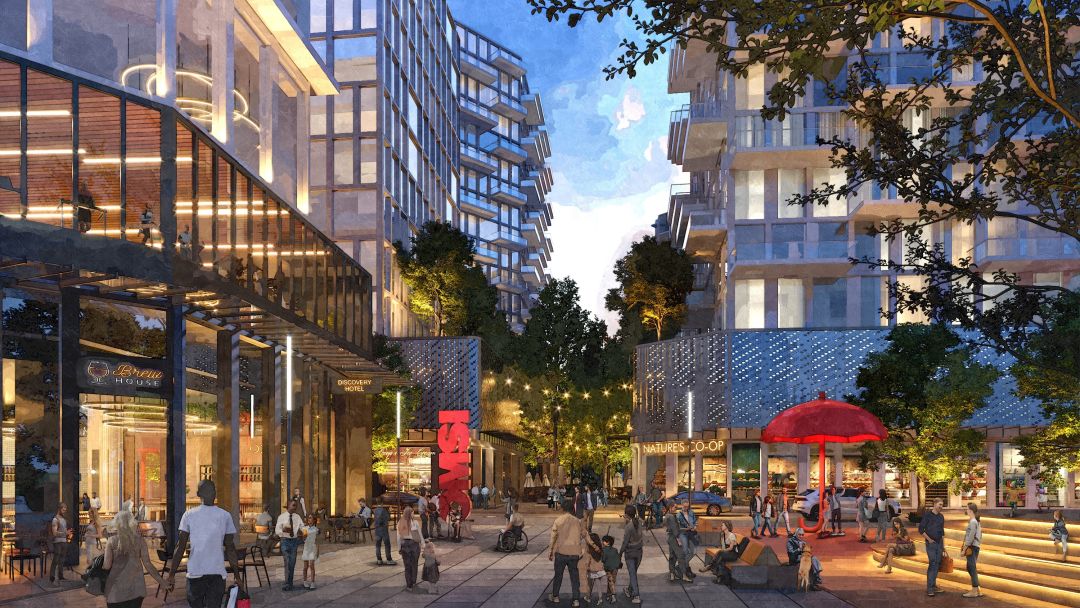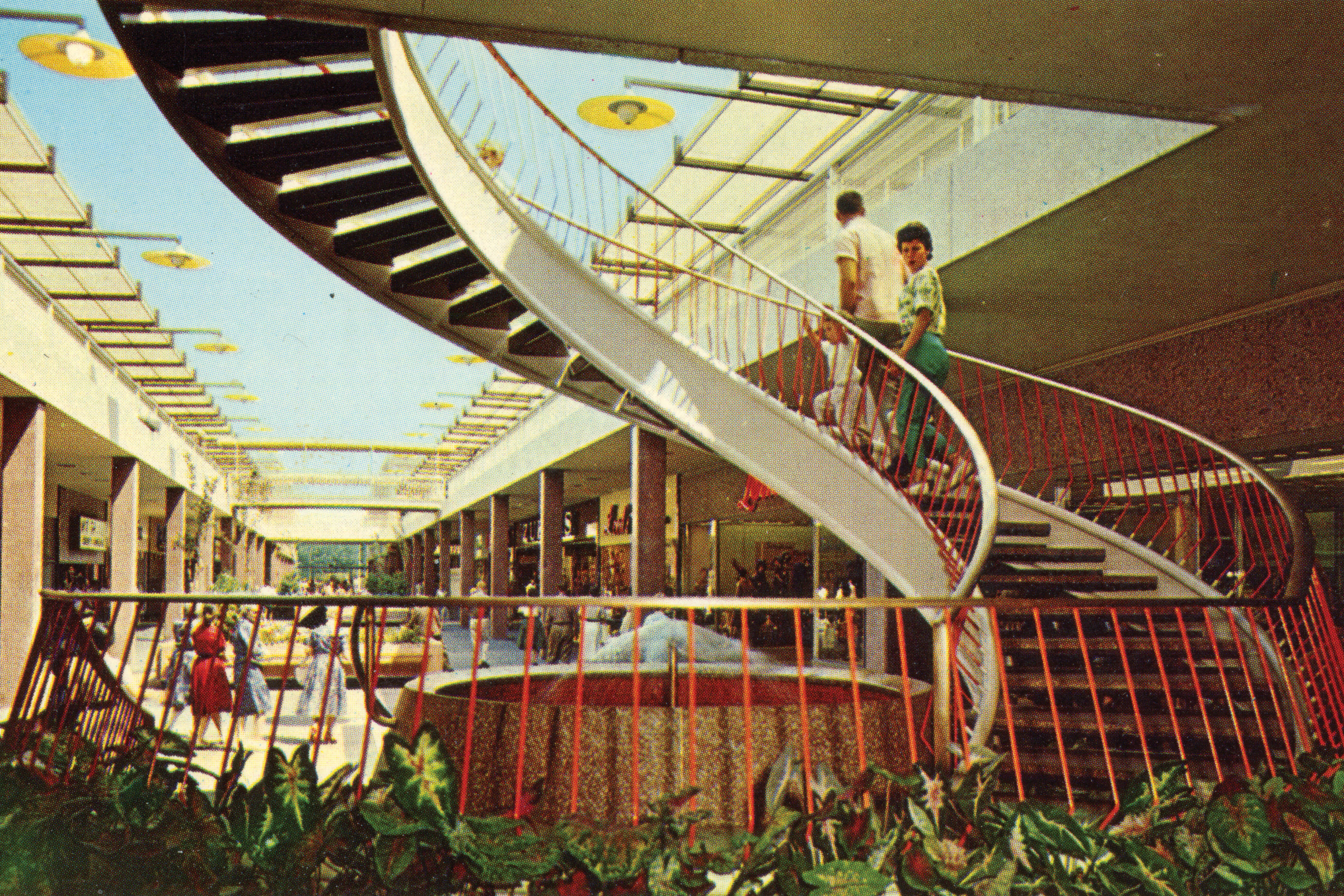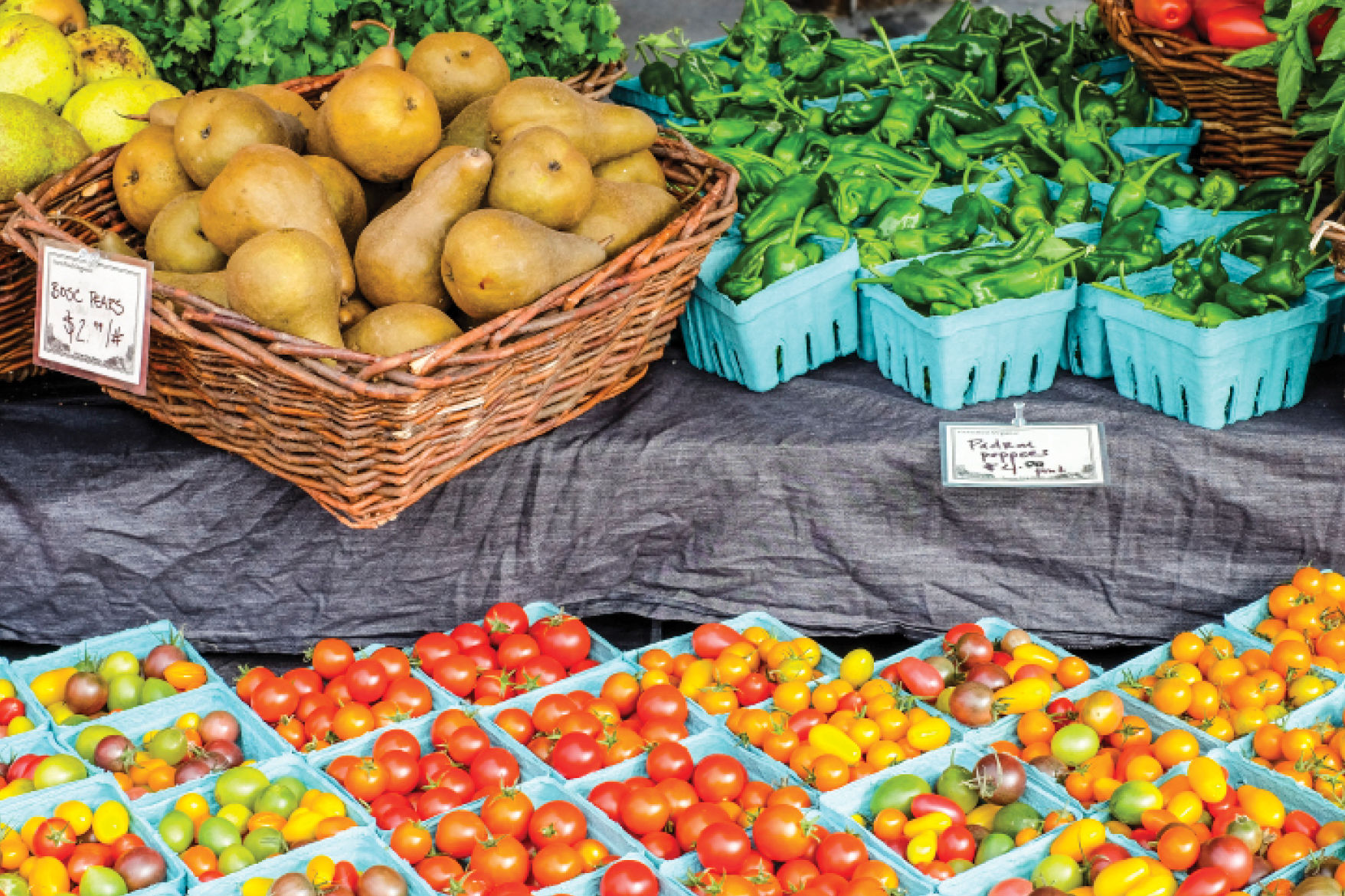A Public Market in Portland? Its Backers Say That's Still the Plan

A rendering of the new OMSI district, where the backers of the James Beard Public Market are interested in locating.
Image: Courtesy OMSI/ZGF Architects
The folks behind the long-proposed, yet-to-materialize James Beard Public Market in Portland would like the rest of the city to know that they are very much still “alive and kicking,” per the project’s current executive director.
But what they need is the same thing as the drive to open a public market in Portland in the mode of Pike Place in Seattle or Granville Island in Vancouver, B.C. has needed all along: A firm location, money and buy-in from decision-makers in government, and private finance.
They definitely don’t have the first; the second and third are big question marks.
Originally, the vision was to put the market, named for Oregon native and pioneering chef/cookbook author James Beard, smack in the heart of downtown Portland, opposite Naito Parkway and overlooking the Willamette River. Oslo architecture firm Snøhetta, best known for its work on Manhattan’s Times Square and the 9/11 Memorial, produced a soaring and sophisticated set of schematics, but that location was scrapped months later amidst a dispute over pedestrian access and the years it would take to remodel the on-and-off ramps to the Morrison Bridge.
After that, backers considered a site on South Waterfront, at Zidell Yards but that space has most recently been tagged for once-and-future live performances and events, including the pandemic-era, socially distanced Lot at Zidell Yards of summer 2021.
Now, says executive director Fred Granum, the intention is to build on the east side of the Willamette River, be it as a part of OMSI’s newly-announced redevelopment of the blocks around the museum, down by the Moda Center in connection with the Albina Vision Trust, or even as part of whatever the next incarnation of the Lloyd Center Mall might be.
“I’m very confident we still have support at the city and state level—the city needs a public market now more than ever,” Granum said in an interview this week. “We need to get back into the cycle of things, which we are preparing to do. We have had a number of false starts at different sites. All of these real estate developments take a long time and money. Our primary focus for 2022 is to find a site and identify how we can go from there.”
In 2019, the Portland Public Market Foundation somewhat controversially landed a $400,000 grant from the state legislature for continued feasibility studies, despite some lawmakers at the time pointing out that the effort had already received nearly a million dollars in public funds with little to show for the results. Around that time, Granum notes there was also a $100,000 grant from the city of Portland for pre-development work. But those funds were rescinded when the pandemic hit, Granum says, diverted to emergency services and pandemic relief.
During the most uncertain months of the pandemic, like so many other parts of society, the public market effort went virtual. The result is an online directory and blog called “Oregon Taste” that maps out where to buy locally grown fruit and vegetables, plus locally raised meat, poultry, and other products statewide.
Granum, though, says his focus will shift back to bricks and mortar in the year ahead. He’s particularly enthusiastic about the possibilities offered by the OMSI district, after what he says has been years of back-and-forth correspondence.
The James Beard Public Market, however, is not overtly called out in the OMSI district development plans, which were released last week. And a noncommittal OMSI is keeping its cards close to its chest, as it works with local real estate developer Edlen & Co to pinpoint tenants.
“The goal of the OMSI District is to create a science, technology, engineering, arts, and math (STEAM) learning ecosystem with communities and partners,” Erin Graham, OMSI’s president and CEO says via statement. “We’ve been in discussion with the James Beard Public Market and many other potential tenants about the possibility of locating in the OMSI District.”
In the decade and change that a Public Market has been under discussion in Portland, there’s been enormous shifts in the city’s food scene. The Portland Farmers’ Market has expanded its reach and footprint, both citywide and year-round, established food cart pods are now in almost every neighborhood, and upscale new indoor markets and food halls showcasing fresh produce and prepared foods alike have opened, including Providore on Sandy Boulevard and Cooperativa in the Pearl District. There’s also Ecotrust’s The Redd, which acts as an incubator for emerging food businesses and nonprofits.
Alone, none are exactly what a public market could be; taken together, they suggest a broader food community that kept moving forward as development hurdles have derailed the Public Market conversation.
Still, Granum says he’s undeterred, and determined that an eventual Public Market, should the right location and money from public/private sources ever crystallize, won’t be just a tourist draw, whether or not salmon eventually fly through the air.
“As we have studied public markets across the country, (we’ve learned that) the market in Portland must be developed with the local community in mind and represent their tastes,” Granum says. “A public market is in a permanent site on a year-round basis, must serve the community, promote local farming, include programming on food justice and education. All of those are critical to why we believe a public market would serve the city, and why we expect to have government and public support.”



